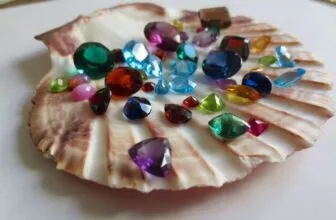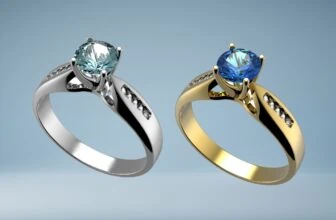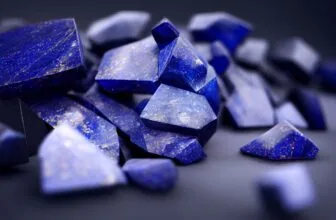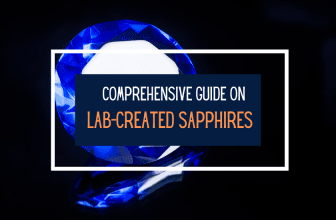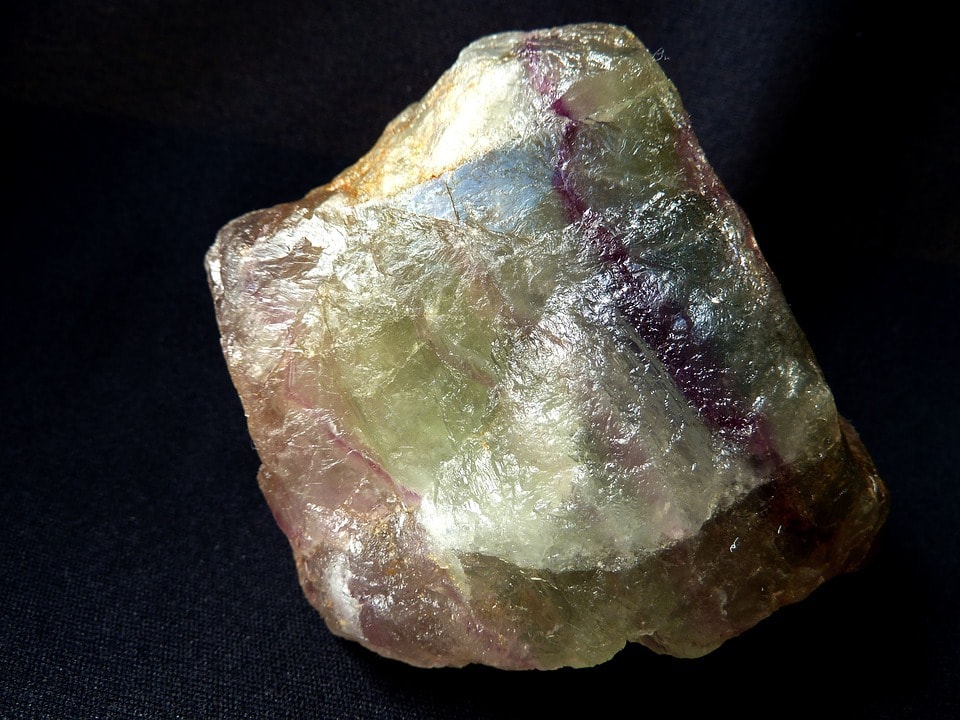
Table of Contents
Fluorite is a beautiful gemstone known for its rich colors and clear look, making it a special addition to any jewelry collection. When shopping for fluorite jewelry, it’s important to pay attention to its color range, from deep purples to bright greens. But what else do you need to look out for?
Let’s explore everything there is to know about buying fluorite jewelry from the importance of its color and clarity to what to ask when you’re purchasing it.
What is Fluorite?
Fluorite is a colorful and eye-catching mineral known for its variety of colors and glassy look. Made of calcium fluoride, this stone is quite soft, scoring only a 4 on the Mohs hardness scale. This means it’s best used in jewelry that doesn’t get worn every day. Its most striking feature is its range of colors, from deep purples and blues to greens, yellows, and even transparent forms. Often, fluorite shows banding or multiple colors in one stone, making it stand out.
A unique aspect of fluorite is how it glows under ultraviolet light, a property that gave the name to “fluorescence.” This glow comes from certain impurities in the stone and varies based on where the fluorite comes from. Beyond its looks, people value fluorite for its supposed mental benefits, like clearer thinking, better decision-making, and a feeling of calmness.
Major sources of fluorite are in China, Mexico, Mongolia, South Africa, Spain, and the USA. In jewelry, it’s commonly made into beads or cabochons to highlight its patterns and colors. But, because it’s soft, it needs gentle care to prevent scratches. Its wide availability and unique look make it a favorite among gem collectors and enthusiasts.
Fluorite’s mix of beauty, color variety, and glowing properties make it a standout choice for those looking for something special in their gem collection.
Origin and History of Fluorite
Fluorite, with its vivid colors and glass-like shine, has a history as colorful as its appearance. The name ‘fluorite’ comes from the Latin ‘fluere’, meaning ‘to flow’, highlighting its use in iron smelting as a flux to make slag less viscous since the 16th century. Beyond industry, fluorite has deep historical roots.
Ancient Egyptians carved statues and scarabs from fluorite, and ancient Chinese craftsmen used it for carvings and decorative pieces. Its bright colors and ability to fluoresce under ultraviolet light have always fascinated artisans and collectors. In fact, the term ‘fluorescence’ originated from fluorite, coined by physicist Sir George Stokes in 1852 after observing this property.
In folklore and metaphysical traditions, people believed fluorite could capture rainbows, enhance mental clarity, and connect with universal energies. Its diverse colors and patterns have made it popular among mineral collectors and jewelry makers.
Geologically, fluorite commonly forms in hydrothermal veins alongside minerals like quartz and calcite. Major deposits of fluorite are found in Germany, England, China, and the United States. Today, fluorite is valued not just for its industrial use but also for its beauty in jewelry and as a prized item for collectors, with its rich history enhancing its charm.
The 4 C’s of Fluorite
The 4C’s—color, clarity, cut, and carat—are standard measures for assessing diamonds and other gemstones. These criteria apply to fluorite as well, but with some adjustments to fit its specific characteristics.
1. The 4 C’s of Fluorite: Clarity
The best fluorite is free of flaws visible to the naked eye. This is generally typical of fluorite used in jewelry, but it’s always best to check the gem carefully to ensure that there aren’t any visible flaws or blemishes. Because fluorite is not an expensive gemstone, there is no reason to buy included, flawed stones. Make sure your fluorite passes your eye-clean test.
Fluorite has a vitreous luster which is heightened when polished and faceted. You may sometimes come across more translucent fluorite, but these are generally considered lower in value.
2. The 4 C’s of Fluorite: Cut
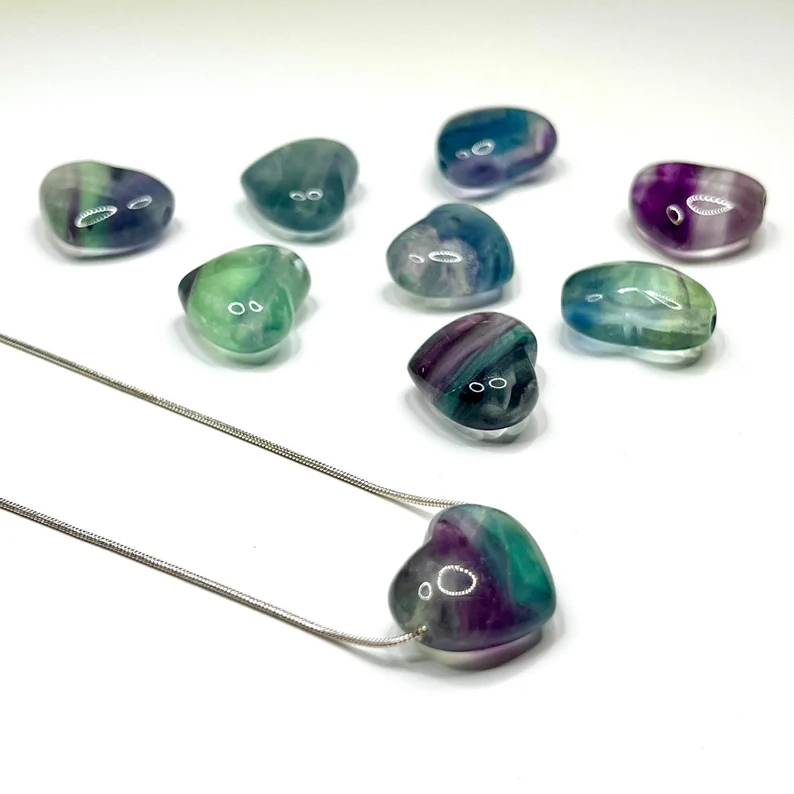
Fluorite’s transparency and vitreous luster are perfect for faceting as this enhances the stone’s beautiful luster and sparkle. The gemstone can be cut into the most popular gemstone shapes, with the most common being round, oval, square, and cushion shapes. Jewelry designers often use rough and free-form fluorite to create beautiful and one-off jewelry.
However, due to fluorite’s softness and distinct cleavage, it can be a notoriously difficult stone to cut. Gemstone cutters have to take care when cutting fluorite as the stone can easily fracture or cleave at even small misteps.
3. The 4 C’s of Fluorite: Color
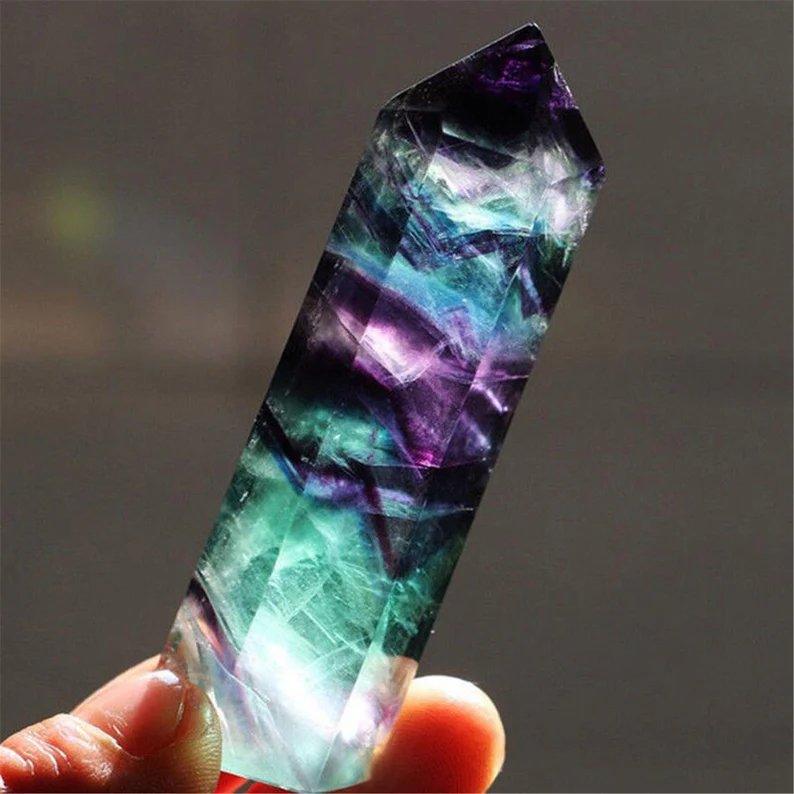
Fluorite stands out as one of the most colorful minerals in the world, offering a vast range of colors from clear and colorless to deep black. Although tourmaline is known for its rainbow colors, fluorite’s variety of hues is unmatched. Normally, fluorite is famous for its purple color, but it’s actually colorless in its purest form. The different trace elements in fluorite give it this wide color spectrum.
These colors can be intensely vivid or very faint, influenced by the type and amount of impurities. Rare fluorite colors include colorless, brown, black, and pink, and even blue, yellow, and red fluorite are uncommon. Fluorite’s real charm lies in its potential for multiple color zones or banded patterns, which look stunning when cut to enhance these traits.
Fluorite gets its colors from a mix of factors like various impurities and radiation exposure. Iron can turn fluorite green or yellow, while manganese can make it purple. The crystal’s structure changes due to radiation exposure, known as color centers, also affect how it absorbs and reflects light, adding to its color range.
Each piece of fluorite is unique, its colors shaped by its chemical makeup and the conditions it’s been through, showcasing nature’s incredible creativity.
4. The 4 C’s of Fluorite: Carat
Carat, which measures a gemstone’s weight, plays a key role in determining fluorite’s value. Generally, larger fluorite pieces with bright colors and clear quality are in higher demand and more valuable. However, size doesn’t affect fluorite’s price as much as it does with rarer gemstones like diamonds.
Fluorite is relatively common and not as hard, making it less rare and expensive than harder gems. As a result, while a bigger fluorite piece can be more attractive and valuable, its price doesn’t skyrocket with size.
In the fluorite market, a piece’s value depends evenly on all 4Cs—color, clarity, cut, and carat—instead of mainly on how big it is.
Is There Synthetic, Treated, or Imitation Fluorite?
Synthetic, treated, and imitation fluorite are available, though they’re not as common as other gemstones. Labs produce synthetic fluorite that mimics the natural stone’s characteristics, mainly for industrial use in fields like metallurgy and optics.
Treated fluorite isn’t very common, but when it occurs, it usually involves heat treatment to improve its color or clarity. However, fluorite’s softness and tendency to split easily make it less suitable for extensive treatments. Imitation fluorite, often made from glass or cheaper colored stones, tries to copy fluorite’s bright colors.
These fakes are usually easy to spot because they can’t replicate fluorite’s unique fluorescence under UV light. While these synthetic and imitation varieties have their uses, they lack the natural inclusions and variations that make genuine fluorite so attractive to collectors and jewelry lovers.
Types of Fluorite Jewelry
As mentioned earlier, fluorite isn’t a very hard gemstone so it’s not ideal for all types of jewelry. However, this depends on the jewelry you’re looking for. Here’s a look at the various types fluorite jewelry out there:
1. Pendant Necklaces
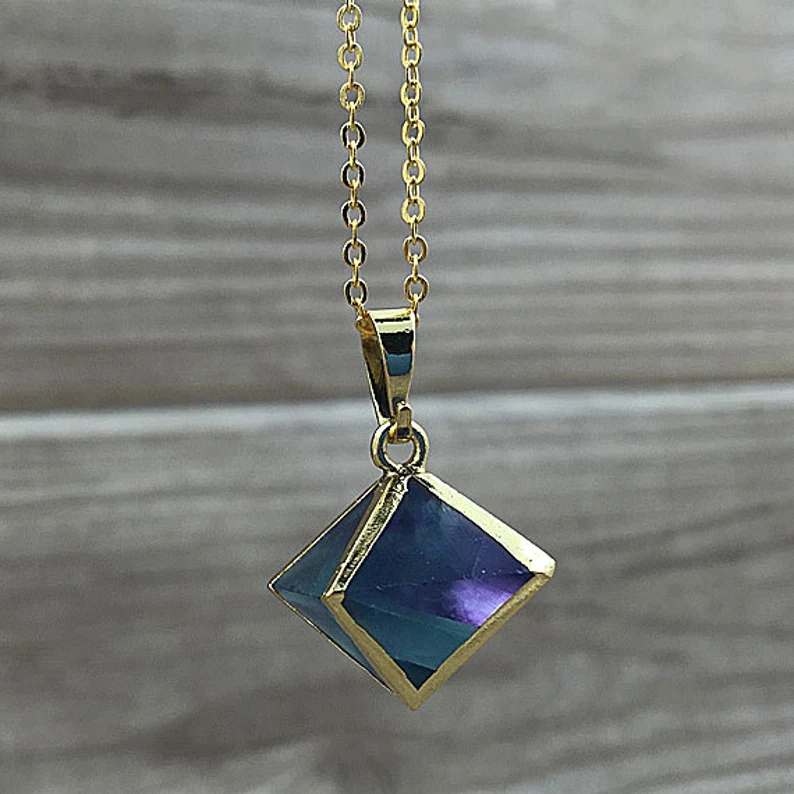
Fluorite pendants are popular for their ability to display the stone’s full color spectrum. Whether cut into smooth cabochons or left in their raw, natural state, these pendants can be simple, with a single fluorite gem, or more elaborate, incorporating multiple stones or additional embellishments.
2. Rings
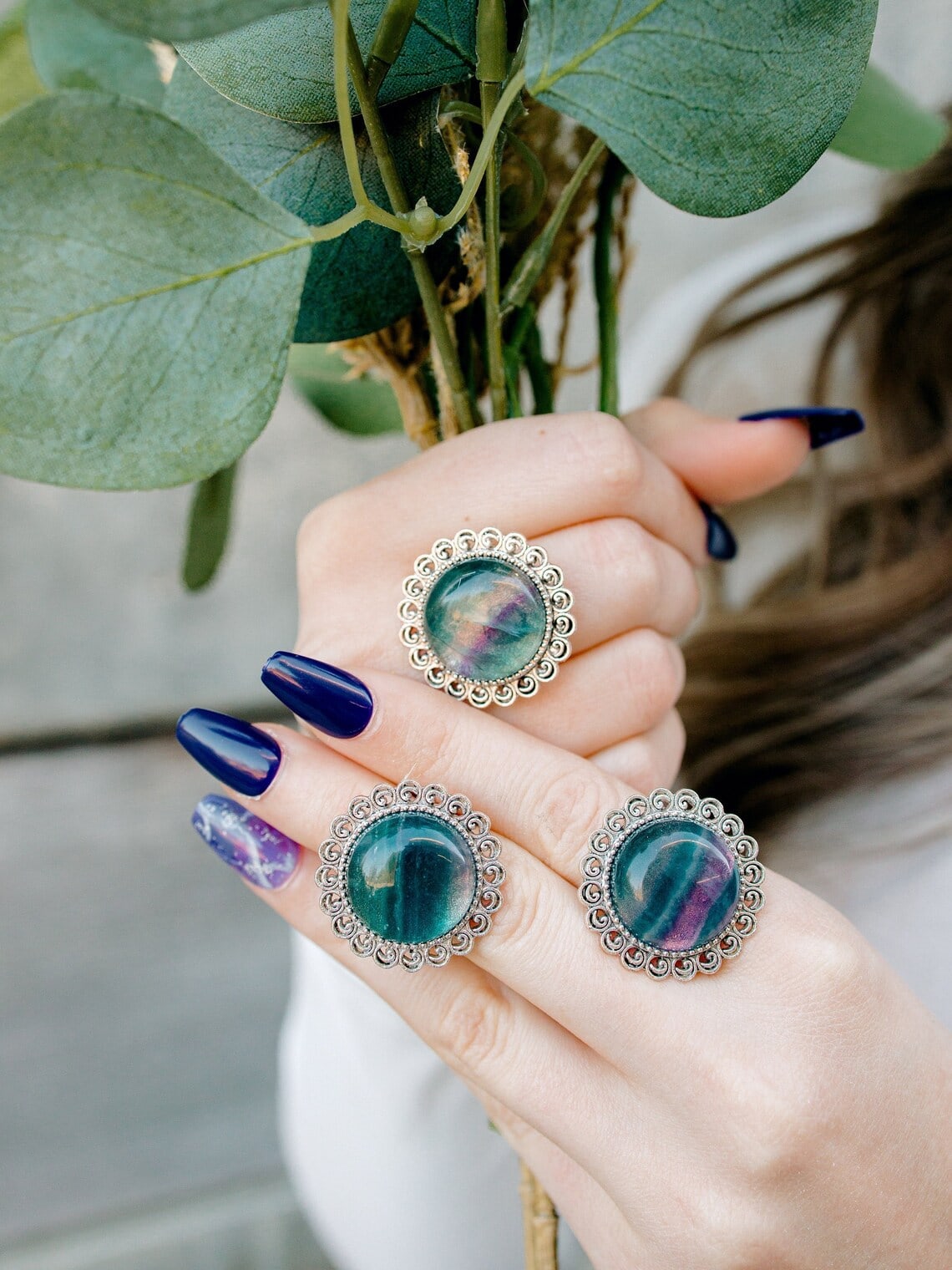
Rings featuring fluorite are stunning but require careful wear due to the stone’s softness. Designers often set fluorite in protective bezels or use it in cocktail rings, where the stone’s size and color can be the centerpiece. These rings might feature fluorite in various cuts, with the cabochon cut being particularly popular to showcase the stone’s depth and color.
3. Earrings
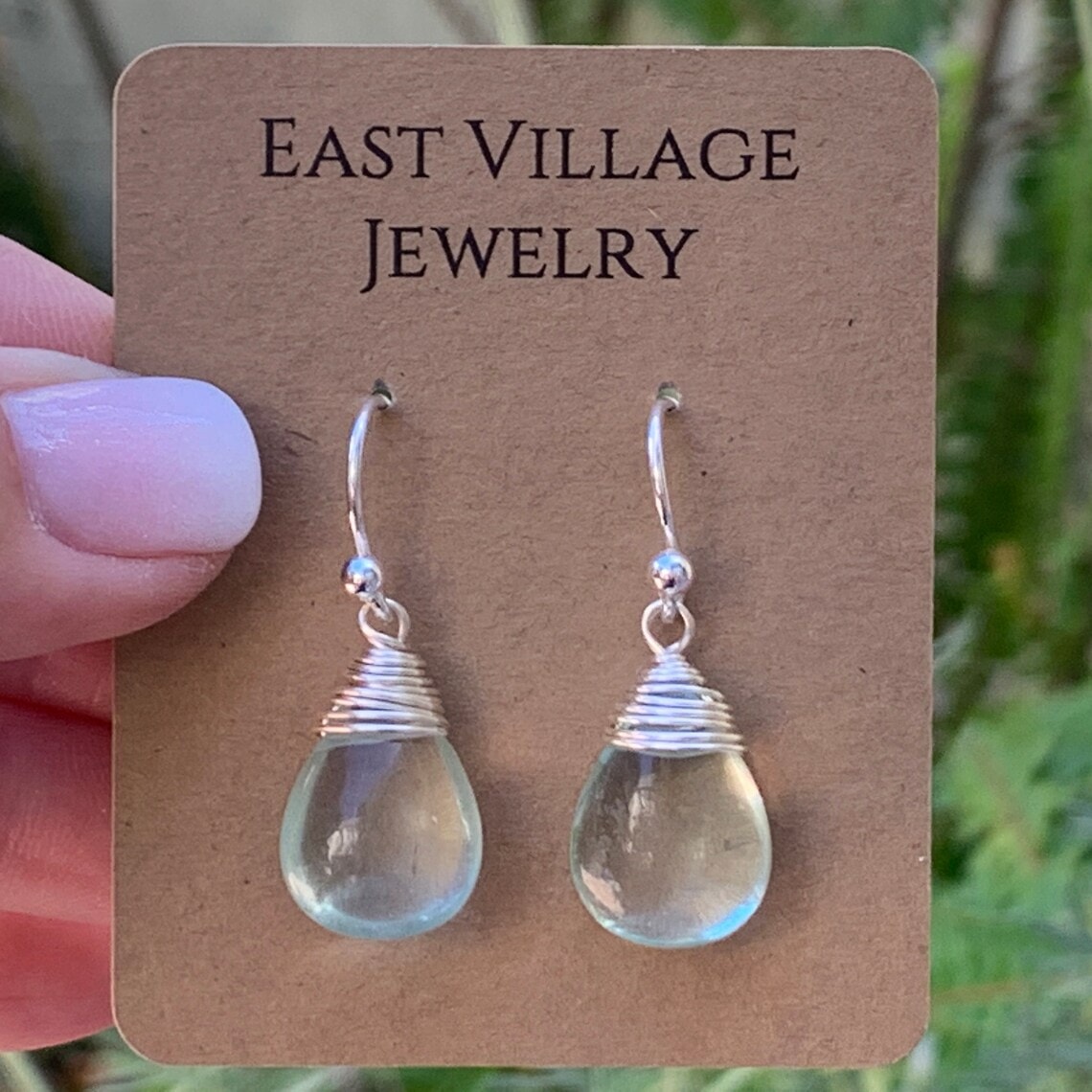
Fluorite earrings range from small studs that highlight the stone’s hue to dangling designs that allow for larger pieces of fluorite. The translucency of fluorite can play beautifully with light, making drop or chandelier earrings particularly striking.
4. Bracelets and Brooches
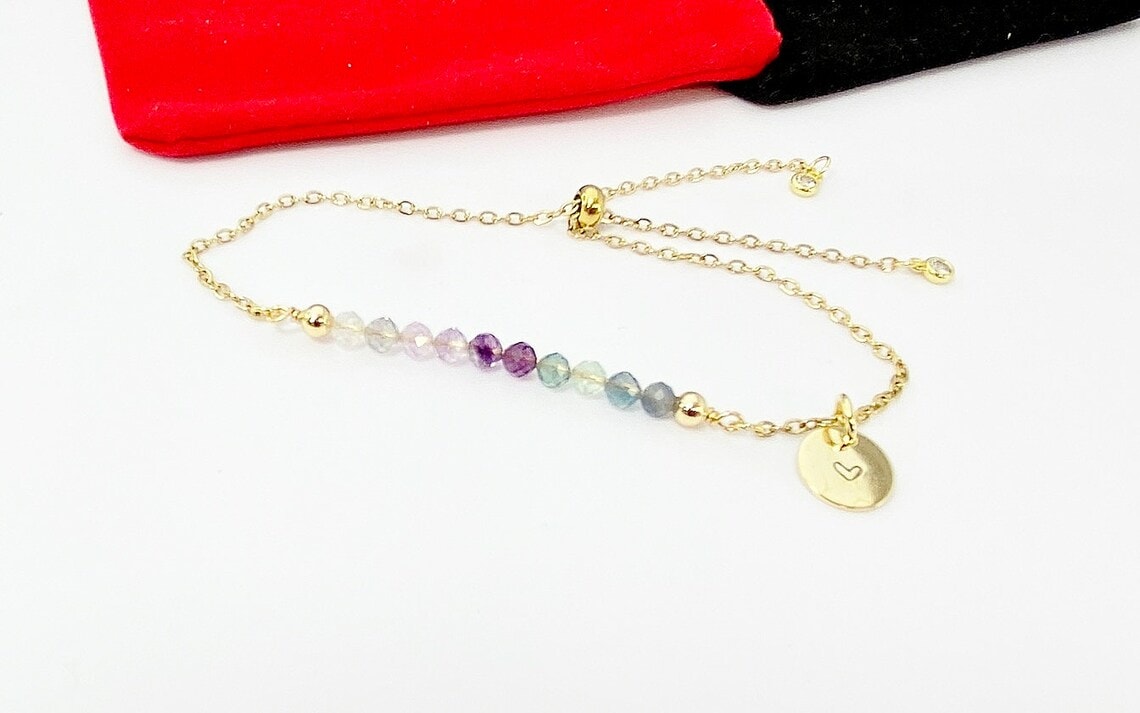
Fluorite bracelets come in many styles, from elegant linked pieces with single stones to bohemian bead-adorned designs. Because fluorite is a softer stone, these bracelets often get treated or coated for extra strength.
Fluorite also works well in brooches, thanks to its range of colors and suitability for larger, more detailed designs. These brooches can feature detailed carvings or combine fluorite with other gemstones, resulting in unique and eye-catching pieces. Fluorite’s color diversity and adaptability make it a great choice for both bracelets and brooches, showcasing the gem’s natural charm and variety.
5. Cabochon and Beaded Jewelry
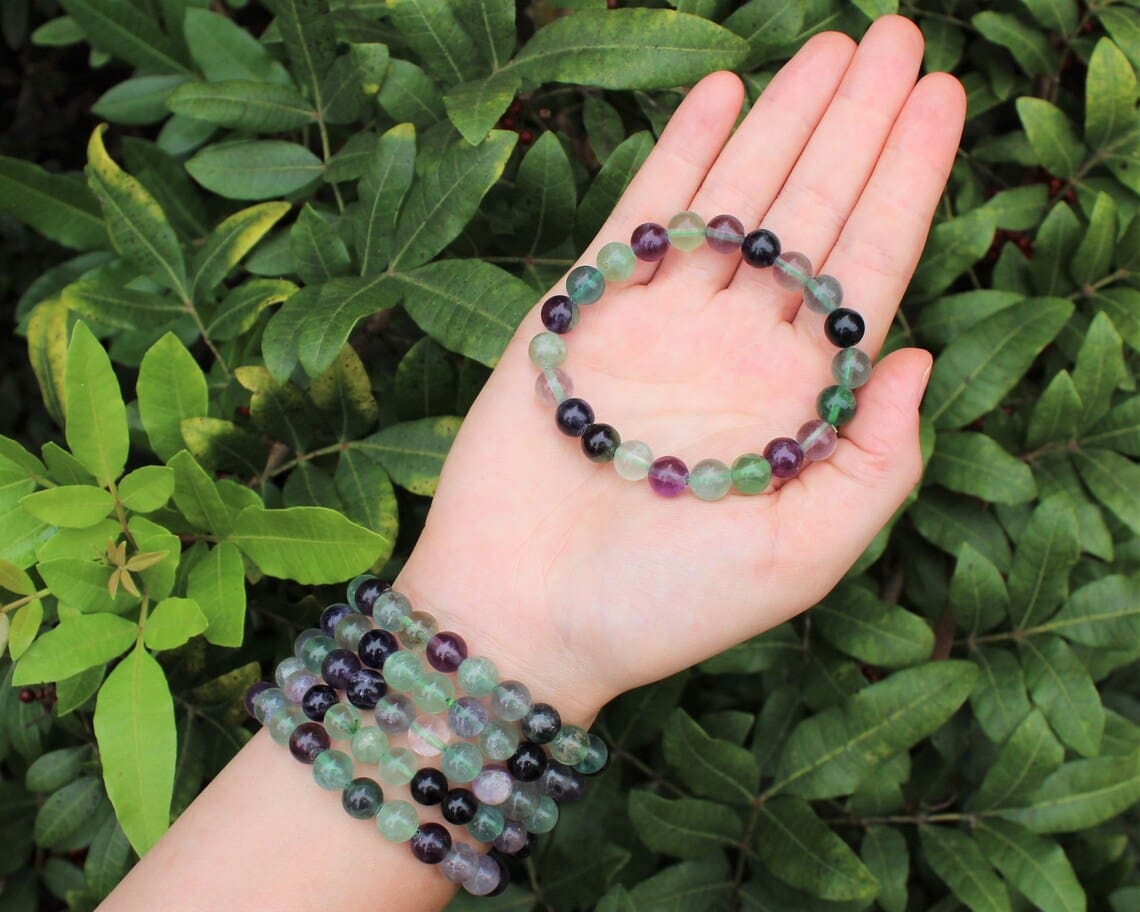
Fluorite’s rich colors make it ideal for beaded necklaces and bracelets. These beads can either show off one color or combine several shades, creating eye-catching pieces. Often, designers mix fluorite beads with other stones to add contrast and make the jewelry more visually interesting.
Fluorite’s softness also makes it well-suited for cabochons, a type of polished, non-faceted gem cut. This style is popular in rings, pendants, and brooches. The cabochon cut brings out fluorite’s unique color patterns and internal features, giving each piece a special and attractive look.
How to Clean and Care for Fluorite
Fluorite is a soft gemstone ranking at just 4 on the Mohs scale. It has also very distinct cleavage, due to the crystal structure of its composition and a brittle tenacity. As a result, fluorite is easily damaged, scratched, fractured, and chipped. However, with proper care, fluorite jewelry can last a very long time.
If your fluorite jewelry is dirty, the best way to clean it is to use a mild liquid soap and warm water. Use a soft cloth or brush if you need to take out dirt in hard-to-reach areas of the jewelry. Avoid anything abrasive when cleaning fluorite jewelry. Also, don’t put fluorite jewelry in ultrasonic cleaners as the vibrations are too strong for the gemstone and may do damage.
If engaging in any vigorous physical activities, such as swimming, running, gardening, and so on, take off your fluorite jewelry. Avoid exposure to chemicals and detergents, including hairspray, cosmetics, or perfumes, and wipe it clean immediately if the stone comes into contact with such chemicals.
Always store fluorite jewelry separately in a jewelry box or pouch, away from other gemstones and metals. This will keep it safe from scratches by other gemstones.
What Does Fluorite Symbolize?
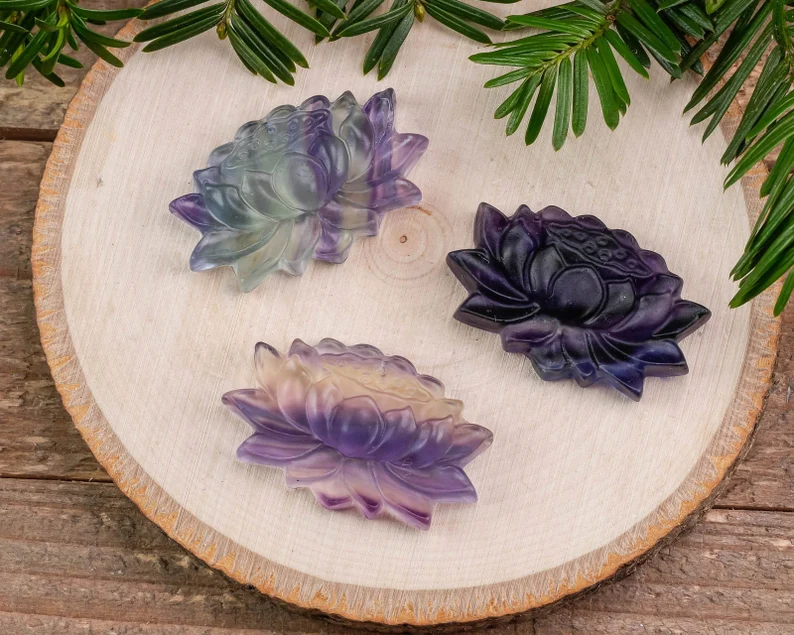
Fluorite’s variety of colors symbolizes clarity, focus, and structure. Many believe that it boosts mental clarity and decision-making, appealing to those wanting to organize their thoughts and actions. Each color of fluorite is thought to connect with different psychic and spiritual elements.
For instance, purple fluorite relates to the Third Eye Chakra, enhancing intuition and spiritual insight, while green fluorite is said to heal and rejuvenate the heart chakra. Its ability to glow under UV light adds another level of meaning, often seen as a symbol of our inner light and hidden truths.
This range of colors and its luminescent quality make fluorite a symbol of multi-dimensional understanding and harmony. It encourages deep thinking, balance, and spiritual connection.
Where to Buy Fluorite Jewelry
Fluorite is not a mainstream gemstone and it may be difficult to find it at local jewelers. However, if you take your search online, you’ll find that many retailers offer beautiful fluorite jewelry.
- Etsy stands out for its limited edition fluorite jewelry collections, featuring a wide range of styles and prices. It supports independent creators and small businesses, offering unique, handmade fluorite pieces you won’t find elsewhere.
- Amazon, meanwhile, provides a vast array of fluorite crystals and jewelry, catering to a broad audience. With everything from simple pendants to designer items, their collection meets various needs and preferences. Amazon’s easy shopping process and wide selection make it a dependable choice for both occasional shoppers and dedicated collectors.
Wrapping Up
Fluorite jewelry goes beyond mere decoration, celebrating nature’s vibrant colors and symbolizing spiritual and mental balance. From the calming greens to the enchanting purples, each fluorite piece carries its own story, adding both elegance and significance to your collection. When you pick out fluorite jewelry, you’re choosing more than just a pretty stone. You’re embracing a piece rich in history, symbolism, and natural beauty, making it a meaningful addition to any collection.


